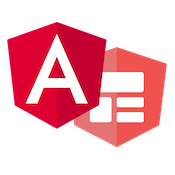Angular Reactive Forms Cheat Sheet
Angular Reactive Forms has a fantastic API to work with and makes using forms a breeze. Even with such a well thought out API occasionally I need to look up how to bind to a particular input type. Because there are so many input types, I decided to create this tutorial or cheat sheet of every built-in browser input type and how to bind to it using Angular Reactive Forms. Check out the code below as well as a working demo example!
Component TypeScript
Using the Reactive Forms API, we can create complex forms easily with provided services such as the FormBuilder service.
import { Component } from '@angular/core';
import { FormGroup, FormBuilder } from '@angular/forms';
@Component({
selector: 'my-app',
templateUrl: './app.component.html',
styleUrls: ['./app.component.css']
})
export class AppComponent {
form: FormGroup;
constructor(private formBuilder: FormBuilder) {
this.form = this.formBuilder.group({
name: [''],
color: ['#ff0000'],
password: [''],
age: [100],
date: [new Date()],
subscribe: [true],
memory: [32],
distance: [50],
region: ['south-america']
});
}
submit() {
console.log(this.form.value);
}
}Component Template
Below is the template that shows most of the basic built-in HTML input types and how they connect to an Angular form.
<h1>Advanced Form Types</h1>
<form [formGroup]="form" (ngSubmit)="submit()">
<!-- text input in angular forms -->
<label for="name">Name (type="text")</label>
<input formControlName="name" id="name" />
<!-- color input in angular forms -->
<label for="color">Favorite Color (type="color")</label>
<input formControlName="color" id="color" type="color" />
<!-- password input in angular forms -->
<label for="password">Password (type="password")</label>
<input formControlName="password" id="password" type="password" />
<!-- number input in angular forms -->
<label for="age">Age (type="number")</label>
<input formControlName="age" id="age" type="number" />
<!-- Distance input in angular forms -->
<label for="date">Date (type="date")</label>
<input formControlName="date" id="date" type="date" />
<!-- checkbox input in angular forms -->
<label class="checkbox-wrapper">
<input formControlName="subscribe" type="checkbox" />
Subscribe (type="checkbox")
</label>
<!-- select input in angular forms -->
<label for="memory">Memory (select)</label>
<select formControlName="memory" id="memory">
<option value="16">16 Gigabytes</option>
<option value="32">32 Gigabytes</option>
<option value="64">64 Gigabytes</option>
<option value="128">128 Gigabytes</option>
</select>
<!-- range input in angular forms -->
<label for="distance">Distance (type="range")</label>
<input
formControlName="distance"
id="distance"
type="range"
min="0"
max:"100"
/>
<!-- radio input in angular forms -->
<span class="label">Region (type="radio")</span>
<label>
<input
formControlName="region"
type="radio"
name="region"
value="north-america"
/>
North America
</label>
<label>
<input
formControlName="region"
type="radio"
name="region"
value="south-america"
/>
South America
</label>
<label>
<input formControlName="region" type="radio" name="region" value="europe" />
Europe
</label>
<br />
<button>Submit</button>
</form>Check out the full working demo link below!

